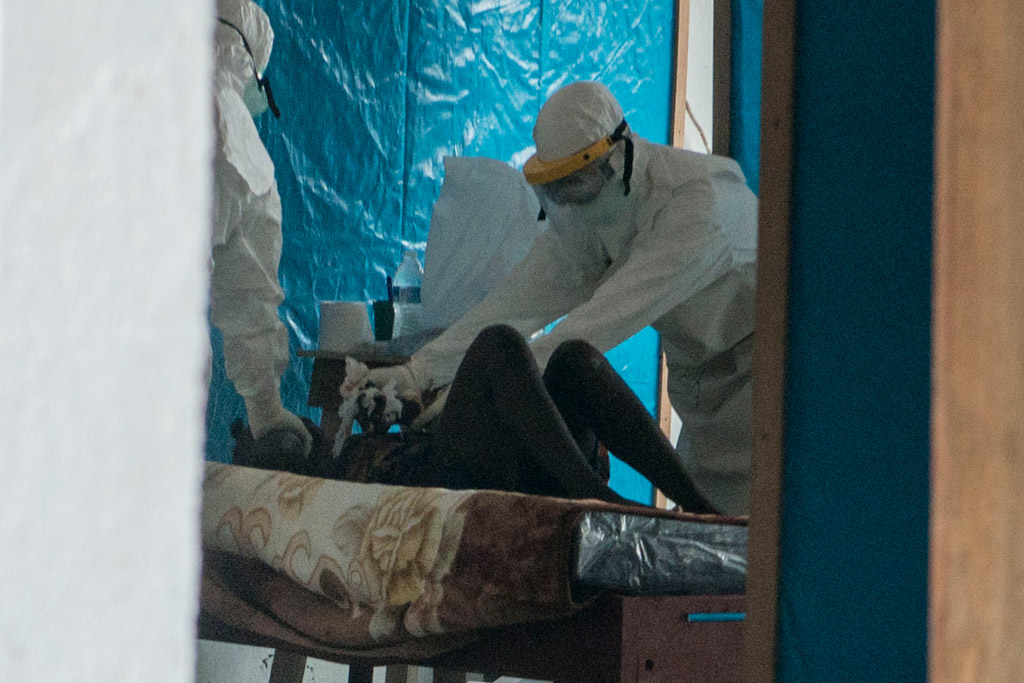The Ebola virus, which has taken the lives of over 4,000 people in Liberia over the past year, could be wiped out completely by the beginning of summer. It is not a foregone conclusion, but it is a realistic possibility, according to the researchers responsible for a new forecast based on new highly inclusive models.
“I think the elimination of human-to-human transmission of Ebola in Liberia by summer is probable and can be expected,” Dr. John Drake, the associate professor at the UGA Odum School of Ecology who led the project, told The Speaker. “However, as with all infectious diseases near elimination, the last mile will be one of the toughest and it would be foolish to count on elimination before it has been finally achieved.”
The work was undertaken by a joint team of ecologists from the University of Georgia and Pennsylvania State University.
“Our new method of model fitting — called the ‘method of plausible parameter sets’ — aims to quickly provide a back-of-the-envelope working model that primarily rules out inconsistent scenarios rather than quantifying the relative likelihood of alternative consistent scenarios,” Drake told us.
Their model not only estimates Ebola’s reproductive number (the number of new cases that could result from currently infected people), but also infection and treatment setting, variations in individual infectiousness, hospital capacity and burial practice changes.

“The factors in our study are inter-related. Hospital capacity and a willingness of infected persons to be admitted are mutually reinforcing as hospitals can do nothing to isolate patients if infected persons are unwilling to be recognized and a willingness to be treated is useless without facilities that can safely treat. The safe, dignified burial of the deceased was also crucial to reducing the average number of secondary infections from a case. I believe all three were necessary for containment.”
It does not include some other factors, however. The team limited their model to what they felt was most important, ignoring superfluous data in order to achieve a usefully “intermediate complexity.”
The models used data from earlier Ebola outbreaks, factored for underreporting, in-hospital and burial transmission, and infection control effectiveness. They then added data from July through September about new cases and changes in the factors of transmission. Branching processes — a mathematical formulation that provides for all possible outcomes based on the proportion of their probabilities — was used in the models.
“Branching process theory is an area of mathematics that can be used to model contagion, reproduction, and other population dynamic phenomena that have a probabilistic component to them,” Drake explained. “We found it to be useful in this case because we could derive many of the properties of interest — like the average change in infection — from considerations about the constituent processes — like transmission from nursing care or during funeral preparations and proceedings.”
One of the biggest takeaways from the Liberian outbreak, Drake commented, was the decisions and actions of those who undertook to fight it.
“Containment required collective coordinated action. Governments, non-governmental organizations and the Liberian people are to be commended for acting swiftly and assertively. Our model predicts that if they had not, things might have gotten much worse very quickly.”
The researchers expect that their model will also be useful for future outbreak scenarios, as will their new method for model fitting.
The report, “Ebola Cases and Health System Demand in Liberia,” was completed by John M. Drake, RajReni B. Kaul, Laura W. Alexander, Suzanne M. O’Regan, Andrew M. Kramer, J. Tomlin Pulliam, Matthew J. Ferrari, Andrew W. Park, and was published in the journal PLOS Biology.
